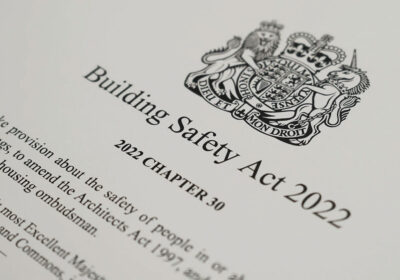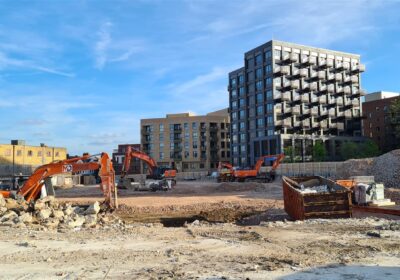There’s no shortage in supply when it comes to new housing rules. Take a step back and you realise that for more than decade now we have talked about a housing crisis. Yet every year our policy makers conspire, inadvertently perhaps, to make it harder to build homes. Why – because there is a huge yawning data gap. It afflicts policy makers and practitioners alike.
Here with are three examples.
- Boom and bust construction
Construction firms accounted for 16.6% of all insolvencies in England and Wales in January 2024. Cost inflation and a lack of real time information casts a heavy shadow. The BCIS, the main index, is patchy.
Moreover, we do not have integration yet between construction data and land. The result is a planning system conceived on viability evidence which is disconnected to reality and a land market geared towards squeezing everything. Real time construction data can offer so many positives from sustainability, to better pricing and transparency. It will smooth out the dips.
- Whole life cost data is never captured, if it was would policy change?
Buildings have a whole host of costs beyond their raw elements. Unfortunately, data tracking doesn’t pick this up but warranty providers spot the weaknesses. Warranty providers have responded to regulatory complexity and the pains of the last few years by increasing their premiums. The big providers have left the cities but does Government even know because they are not tracking this end of the building cycle.
Want to know the cost of warranty cover? It’s gone up 3 to 4 times. These six to seven figure numbers will hamper housing viability. If regulations get more complicated, if there is more risk, then someone has to pay for the ongoing liabilities. Go figure.
- If the cost benefit is in doubt then should we think again or at least think holistically
The government has published its cost benefit analysis for the impact of second stair on buildings above 18 metres. See here: Impact Assessment on the introduction of Second Staircases in residential buildings above 18m (publishing.service.gov.uk)
The 18m second staircase rules result as follows:
Benefits (net present value): £9.1 million
Costs: £2.68 Billion
Big numbers. If the cost is £2.8 bn but it has to be done, then policy makers should think holistically about what other data points need to change to ameliorate these affects. You can’t expect the sector to swallow a number like that and also keep building. Where is the joined up data to inform policy?
Conclusion
Lack of information and data gathering harms housing and harms the legitimacy of policy makers. Here’s the positive though. Technology is moving things forward and data gathering is getting better. There is so much potential here and the public sector is starting to see the opportunity.
I’ll give one example. I had a pre-app with a London Borough only two weeks ago where we agreed to share our Vu City model of a proposed scheme. Openness on design data makes a huge difference when that data is accepted as a base line by all parties. The days of ‘CGI lies’ are hopefully behind us.
Proptech has a huge role to play in capturing and integrating the many data sets that make up the full land and building cycle. It will stop some of the bad decisions from happening in the future. We’re not there yet, but just maybe there are signs things can change.










